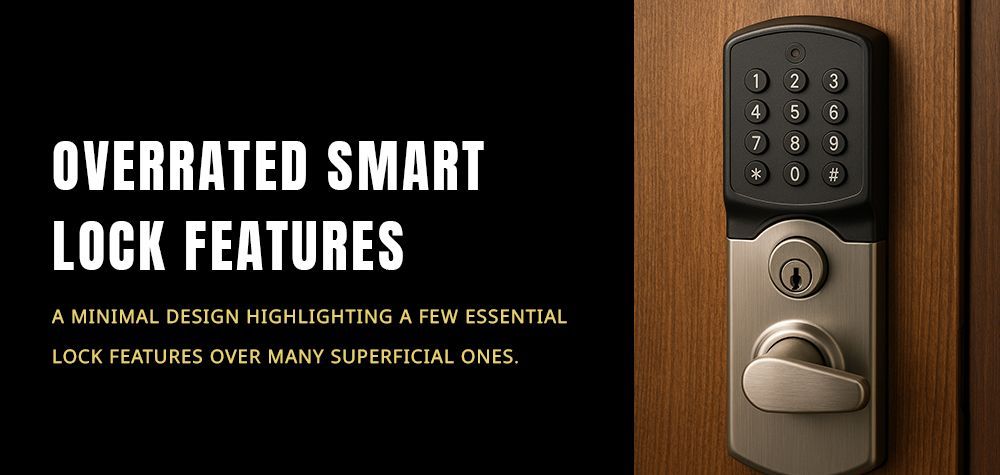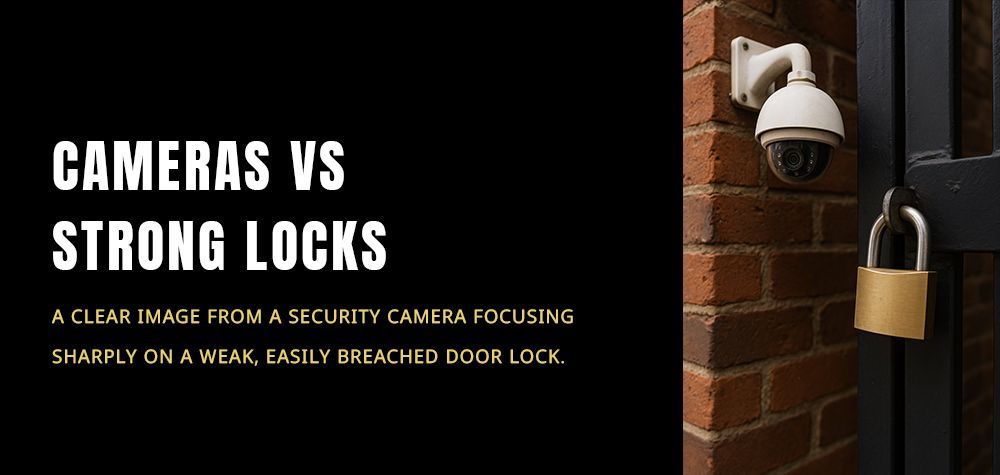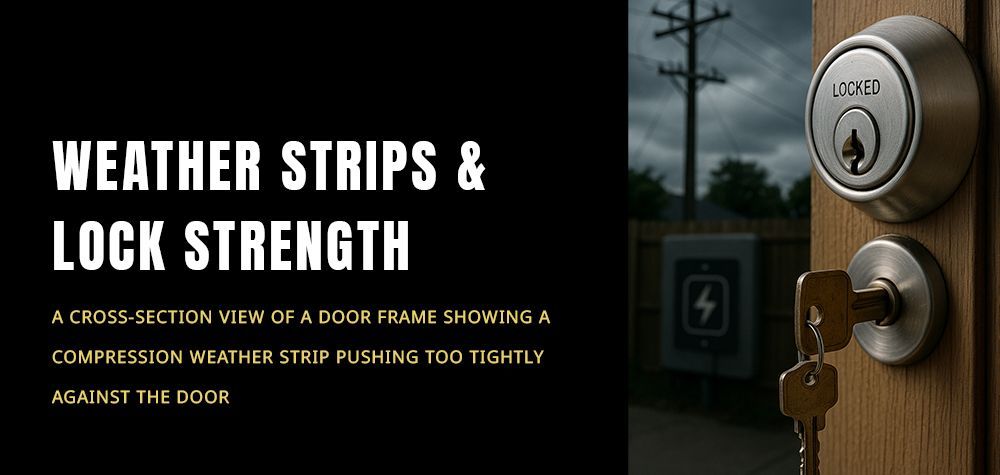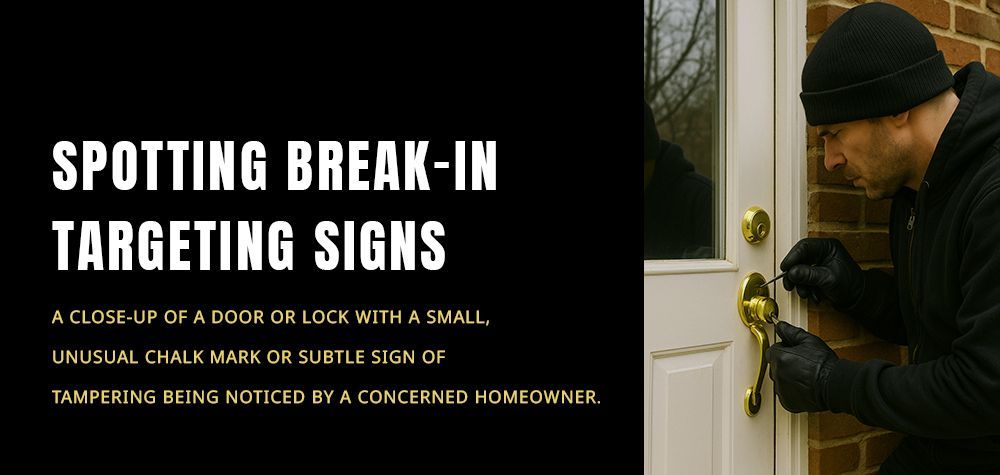Can a Locksmith Break a Smart Lock Without Destroying It?
Smart locks blend mechanical components with electronics and software, and they are designed for convenience and security. But when something goes wrong — a dead battery, a failed firmware update, a lost admin account, or an owner locked out after a move — people often wonder whether a locksmith can get them back in without trashing the device. The short answer is yes: experienced locksmiths frequently gain access to smart locks and restore function without destroying the unit, but how they do it depends on the lock type, how it was installed, and the nature of the problem. This article explains the typical methods, limitations, risks, and what owners should expect when they call a professional.
How to chain multiple locks for higher security
Understanding What “Breaking” a Lock Means in the Smart Age
With a traditional lock, forcible entry usually means damaging the cylinder, breaking the strike plate, or drilling the mechanism. With smart locks, there is the added complication of electronics: circuit boards, batteries, wireless modules, and sensor housings. “Breaking” a smart lock can mean permanently damaging the electronics, deforming the mechanical parts so replacement is needed, or rendering the device unusable for future smart functionality. Skilled locksmiths aim to avoid all of these outcomes by using techniques that preserve both the physical hardware and the lock’s digital credentials whenever possible.
Why Non destructive entry is worth the effort
There are two big reasons locksmiths try to avoid destroying a smart lock. First, replacement costs for smart locks are often significantly higher than for mechanical deadbolts because of electronics, proprietary components, and programming fees. Second, many owners rely on the smart functions — the mobile keys, activity logs, and integrations — and losing them can be disruptive and expensive to reestablish. A successful non destructive entry keeps the lock, its settings, and any paired devices intact, saving time and money and maintaining continuity of access control.
Scenarios Where a Locksmith Can Open Without Damage
When the lock is physically intact but the problem is user error or an electronic glitch, locksmiths can often resolve the issue without harming the unit. If the battery has died, for example, a locksmith may power the device temporarily to trigger an electronic override. If the lock is still paired to a manufacturer cloud or has a master admin account available, the locksmith can work with the owner to authenticate and reissue access remotely or using the vendor tools. Mechanical problems like a stuck deadbolt due to misalignment are usually solved by adjusting the door or the rollers rather than removing the lock. Even when a key is broken in the mechanical core, locksmiths often extract the broken piece and rekey the cylinder in place.
Techniques Professionals Use to Preserve the Lock
A reputable locksmith uses a spectrum of techniques that prioritize non destructive outcomes. These include careful diagnostics to determine whether the issue is mechanical, electrical, or software based, temporary external power supply to revive a dead battery, soft resets and safe firmware recovery where the manufacturer permits it, gentle mechanical manipulation to free seized bolts, and precise removal of trim in order to access the cylinder without damaging the housing. For models with a mechanical backup, the locksmith may use the mechanical override to open the door and then assess the electronic module afterwards. When replacment components are required, a locksmith will often remove the smart module intact and swap only the damaged part, preserving the rest of the system.
When Non destructive Methods Are Not Possible
There are clear limits. If the lock has been physically tampered with, its internal electronics exposed, or the manufacturer uses sealed components that cannot be accessed without breaking the housing, a non destructive entry may be impossible. Similarly, some ultra-low-cost models are designed with integrated, non serviceable electronics; forcing access will inevitably destroy the smart module. In cases of theft, fraud, or when the owner cannot prove authorization, locksmiths cannot legally or ethically reprogram or open certain devices without manufacturer cooperation. Finally, if security protocols require hardware replacement after a suspected compromise, the responsible course is to replace rather than attempt to preserve the compromised unit.
Why some smart locks lose Wi-Fi connection and how to fix it
The Role of Manufacturer Support and Account Control
Smart locks that are tied to cloud accounts or vendor platforms behave differently from purely local devices. If an owner can log in to the vendor portal and revoke or reissue access, many lock issues can be solved remotely. Locksmiths often liaise with manufacturers on behalf of clients to get elevated support, obtain signed firmware, or receive guidance on secure factory resets. Because manufacturers are cautious with biometric and encrypted credentials, they commonly require proof of ownership before assisting — a process that protects users but can delay immediate fixes.
Legal and Ethical Considerations
A locksmith must verify ownership before intervening. Opening a smart lock without proper authorization can be considered illegal entry or tampering. Professionals follow protocols to confirm identity, obtain signed consent, and document the work they perform. If you call a locksmith, be prepared to show ID, proof of residence or ownership, and details about the lock model. Ethical locksmiths also advise on whether preserving the existing lock is advisable after a security incident or whether replacement is safer.
Cost and Time Expectations
Non destructive entry is normally faster and cheaper than full replacement, but it is not free. Diagnostics, software troubleshooting, temporary power devices, and delicate mechanical work all take time and skill. If the job requires manufacturer coordination or replacement parts, expect additional time and cost. A transparent locksmith will explain options and likely outcomes before proceeding, including the potential need to replace the unit if preservation cannot be achieved safely.
What Owners Can Do Before Calling a Locksmith
You can increase the chance of a non destructive resolution by preparing some information and taking simple steps while waiting for help. Locate receipts or proof of purchase, note any recent firmware updates or error messages, identify whether the lock is cloud managed, and check for spare mechanical keys or backup entry options. If the lock supports an external temporary power input, a homeowner may safely provide power to see if the electronics reboot, but avoid disassembling the lock yourself — that can convert a repairable issue into an irreparable one.
Post Service: Reprogramming, Rekeying, and Hardening
If the locksmith gains entry without destroying the lock, they will typically recommend follow up actions to restore security. This may mean reprogramming the admin credentials, rotating digital keys, updating firmware, and rekeying the mechanical cylinder if keys may have been compromised. If a destructive access was necessary, a locksmith can recommend and install a replacement smart lock or a hybrid system that combines mechanical strength with secure cloud management. Good practice after any lock intervention is to reset shared keys, update passwords, and confirm that two factor authentication is enabled where available.
Choosing the Right Locksmith for Smart Locks
Not all locksmiths are equally qualified to work on smart locks. Selecting a technician with specific experience in electronic access systems, vendor certifications, and manufacturer partnerships increases the odds of a successful non destructive repair. Ask about experience with your lock brand, whether the locksmith offers mobile diagnostic tools, and how they verify ownership. A professional service like Brothers Locksmith combines mechanical expertise with modern electronics know how, enabling them to handle both traditional and smart lock troubleshooting with care.
Final Thoughts
Yes, in many situations a locksmith can open, repair, and reprogram a smart lock without destroying it. The feasibility depends on the lock’s design, whether the problem is mechanical, electrical, or digital, and whether the owner can provide authorization and vendor support when required. A thoughtful balance of diagnostic skill, careful mechanical technique, and appropriate manufacturer liaising allows professionals to restore access while preserving the device and its smart features. When preservation is not safe or possible, an honest locksmith will recommend replacement and guide you to a more robust, future proof solution. For owners facing locked out scenarios or compromised smart locks, contact a certified locksmith who understands both the hardware and the software sides of modern access control to resolve the issue quickly and responsibly.
Call Us Any Time!








